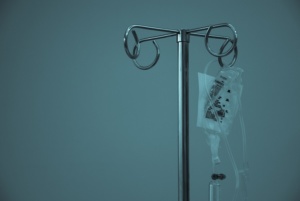
By: Dr. Elton Gomez, Regenerative Medicine Specialist
“What is a lie today, maybe true tomorrow, and vice versa.”
This phrase, in the case of the COVID19 pandemic, indicates that we are standing in the middle of a situation in which we do not know exactly what to do, such as when the AIDS pandemic arose. Just today, fake news, rumors, and situations out of context, fill out social media and spread, we have a lot of information available, a lot of it very good, but others are very bad.
This is a new disease, with a completely new virus, although it is a virus of the CORONAVIRIDAE family, a large family of viruses that is responsible for the last registered pandemics, for which health workers, and researchers, must be very attentive to the rumors and the “fake news”, which could contaminate their perspective and their judgment.
The evidence must be used, although most of the evidence is weak, since no double-blind or randomized studies have been done, but there are guidelines, both European and North American, that can be useful to us when establishing adequate treatment.
At the moment there is no miracle treatment, or formally accepted, most of the treatments are “off label”, which means that they are treatments that have been used in other pathologies and that try to be adapted by observing their physiology and biochemistry.
For the moment, the management of the patient is carried out according to its severity, that is, the degree of affection that he has or that he may have.
 Management of the patient at home: this type of treatment is used when the patient does not have respiratory distress, ideally it should also be combined with telemedicine, to give the patient general measures and guidance and explanation of his condition, giving proper management to comorbidities, such as diabetes, hypertension, asthma, or any other underlying disease that the patient may have.
Management of the patient at home: this type of treatment is used when the patient does not have respiratory distress, ideally it should also be combined with telemedicine, to give the patient general measures and guidance and explanation of his condition, giving proper management to comorbidities, such as diabetes, hypertension, asthma, or any other underlying disease that the patient may have.
In the hospitalized patient, we must know how the hospital protocol will guide us to keep him on the floor or send him to the ICU, to receive adequate care, to treat him with hypoxemia, heart failure, transient renal failure and sometimes the delirium or mental problems that you may have due to hypoxemia, and decompensation of the comorbidities that he could have prior to being hospitalized, and the specific treatment for COVID19, either using off-label therapy or experimental therapies:
Among the therapies, we have viral synthesis inhibitors such as Remdesivir, which inhibits the RNA polymerase enzyme and prevents new viruses from being produced, lopinavir-ritonavir, which is used in HIV, and is an inhibitor of viral protease, although with very poor results at the moment, drugs that inhibit the entry of the virus into cells, such as hydroxychloroquine and azithromycin, immunomodulators such as glucocorticoids, such as prednisone and dexamethasone, or tocilizumab, to block interleukin 6 receptors, although by far the best immunomodulator and the most promising is the plasma of patients who have recovered from the disease, although the evidence is very weak, only 5 patients in a study, who have even been in severe condition, have had good results.
To be continued in part 2.


